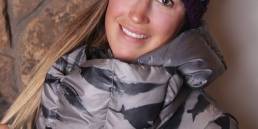Photos by Paul Morrison
Bella Coola Heli Skiing offers mythical skiing in a mystical setting. “What do you call a ski guide without a girlfriend?”
“Homeless.” We chuckle at this oldie, coming as it does from the mouth of Bella Coola Heli Sports lead guide Jia Condon. And while what lies below our jutting ski tips also brings a smile, it’s no laughing matter: 4,000 vertical-feet of unimaginably good powder, on a stable snowpack during the deepest season ever in one of the deepest places going, only days after widespread warming and a risky avalanche cycle had made skiing anywhere along British Columbia’s coast an exercise in tiptoeing over eggshells. Add in dizzying vistas of monolithic peaks and lolling glacial tongues, and it indeed seems things are about to get serious for photographer Paul Morrison, his pro freeskiing son Ian, fellow pro freeskier Tatum Monod, and myself. Or perhaps not.
“How can you tell if someone is a ski guide?” asks Condon over his shoulder, yanking down his goggles. Before we can answer: “Don’t worry — he’ll tell you,” as he disappears into a detonation of snow.
Only an hour flight from Vancouver, the Bella Coola Valley lies at the head of a tortured network of inlets on the British Columbia central coast. Rising directly from the sea to 10,000 feet, the mountains here are steep and heavily glaciated. A hybrid coast/interior weather pattern offers deeper, drier snow than areas closer to the Pacific, and higher stability than inland. Deceptively chiseled peaks drop 8,000 feet to valley floors — much like Europe and not at all like the rest of North America. It adds up to Alaska-style riding on much larger peaks, down massive aprons, convoluted seracs, and inviting couloirs. These are the longest commercial heli-ski descents in the world.
Upon its opening in 2003, Bella Coola was painted by a dozen snow-sport films as heli-skiing’s new Shangri-La — apt, given that this was the term (in various translations) used both by Nuxalk natives and Europeans to describe the lush, treed valley of meandering rivers and abundant wildlife. Bella Coola has always been a crossroads. Following a millennia-old native trade route, explorer Alexander Mackenzie ended his epic two-year crossing of the continent here in 1793; seafarers Sir Francis Drake, James Cook, and George Vancouver all made stops. Later, explorers Sir Edmund Hillary and Thor Heyerdahl were drawn by the mystery of the Thorsen Creek petroglyphs, which most closely resemble those found in Polynesia — was there a connection to the enigmatic Nuxalk culture that has flourished here for thousands of years? That mystery remains, but modern pilgrims know that skiing Bella Coola is an experience like no other.
BCHS’s main accommodation is at historic Tweedsmuir Park Lodge, with luxe cabins arranged around a central eco-lodge that Sierra Club groups beat a path to each summer to watch grizzlies palm salmon from the Atnarko and Bella Coola rivers. An A-star B3 that guarantees small group sizes lands each morning beside the hot-tub/spa/mini-gym and a native-style teepee sweat lodge. Inside, gazing around the recently upscaled surroundings, those who visited in the early days might wonder, What happened to the stuffed cougar? While some memorabilia languishes in an upstairs office, most of the old Tweedsmuir’s dusty kitsch is long gone. The memories, however, are intact, and the stories have piled up as deep as the snowfalls: Here’s the corner where TGR director Todd Jones, passed out drunk, was buried in furniture by his crew, then filmed trying to battle his way out. There’s the table where Shane McConkey drew a sketch of the first rocker ski — the Spatula — after making the first big-mountain descent on water skis (he would also film his first ski BASE jump here). Out the windows are runs like Morrison Hotel (named for ski hero Seth), made famous in many a jaw-dropping ski film.


